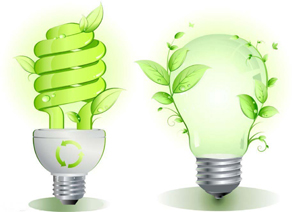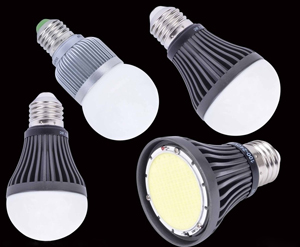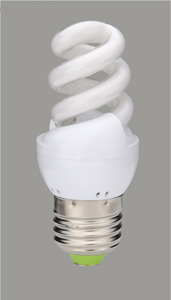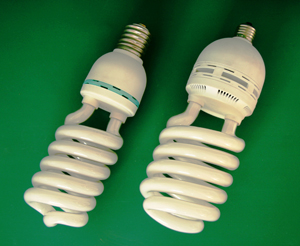Asia Lighting Compact Set Up to Promote Use of Green Lighting in Asia
Forming NGO could help reduce
2010/04/02 | By CENS
Somewhat a refreshing, noble gesture on the part of the U.S. Agency for International Development (USAID) is its announcement that over half of the compact fluorescent lamps (CFLs) sold in Asia do not meet national standards, and worse with promoters also deceiving consumers with misleading advertising. Observers generally overlook the more insidious impact of such deceptive practice, especially in emerging markets with massively ignorant consumers whose confidence can easily be eroded by substandard CFLs, a plausible outcome for many believe “reputation that took a decade to build can be destroyed overnight.”
ALC as NGO
Perhaps not to weed out the makers and advertisers of substandard CFLs as its reason-to-be, but the NGO Asia Lighting Compact (ALC) was formed on the sideline of the Hong Kong International Lighting Fair 2009 (Autumn edition), held from Oct. 27-30, by over 50 representatives form government agencies, lighting manufacturers, lighting associations and quality inspection institutes to help promote using high-quality lighting products in Asia.
With the ALC's task to help promote green lighting as CFLs, the hope is that Asian overall CO2 emissions will be cut by at least 2.4 million metric tons a year, equivalent to planting nearly 300,000 hectares of trees or removing nearly 450,000 cars from roads, with the power saved able to light 2.8 million homes for a year.
Jesus M. Pineda, Jr., President of the Philippine Lighting Industry Association, points out that the ALC can help Asian governments reach energy and climate goals while also protecting consumers.

Manila Compact
The ALC resulted from the “Manila Compact” signed in July 2008 by lighting companies, manufacturers, lighting councils and associations to develop a quality system for CFLs in Asia. Participants in that agreement, along with partners in the Asia-Pacific Partnership on Clean Development and Climate, including Australia, Canada, China, India, Japan, Korea, and the United States, support the establishment of the ALC as an independent, non-profit NGO to implement this quality system.
Shyam Sujan, Secretary General of the Electric Lamp Component Manufacturers' Association of India (ELCOMA), stresses the public-private partnership behind the ALC shows the seriousness of lighting manufacturers, lighting associations and governments in Asia towards energy efficiency and climate change.
Mainland China produces 90% of the world's three billion CFLs, shipping the majority of 20% of exports to the European Union. Since 2008, the EU has stepped up drafting eco-friendly regulations for household appliances including lighting, with regulations for CFLs becoming effective on September 1, 2009.

Compared with EU regulations, China's CFL standard for 5W~40W RR- and RZ-grade lamps demands 0.08% to 23.14% higher efficiency, and its standard for 5W~51W RL-, RB-, RN- and RD-grade lamps demands 0.26% o 29.54% higher efficiency.
However, China's standard for 41W~60W RR- and RZ-grade lamps requires 0.37% to 6.91% lower efficiency than EU counterparts, its standard for 52W~60W RL-, RB-, RN- and RD-grade lamps requires 0.06% to 2.33% lower efficiency, and its standard for 5W-plus RR- and RZ-grade lamps requires 2.25% to 25.66% lower efficiency.

Looser Rules
Generally, China's regulations for CFL performance are less demanding than EU counterparts to only govern average service life, lumen-maintenance rates, activation time, color rendering index, and temperature build-up. In addition, China does not have regulations regarding mercury in CFLs and CFL classifications, with some makers in China still using the hazardous element in such lamps. In contrast, European and American makers are strictly limited by mercury content, and are required to use only solid mercury.
Living up to the negative stereotype that China-made often equals below-par, much of made-in-China lamps are still substandard. In 2008 for instance, only 64.2% of CFLs made in Zhongshan City, Guangdong Province passed municipal inspections, down 6% from the previous year, with only 22.9% of such lamps passing inspections in the second quarter of 2009.
Such unsettling figures pale in comparison to one uncovered recently: Guangdong provincial inspectors found nearly 80% of lamps produced in the province unacceptable in a massive spot check. Furthermore, in September 2009 the Beijing Administration for Industry and Commerce announced 11 substandard China-made energy-saving lamps.
Current State
Xiamen in Fujian Province is the hub of China's CFL manufacture, turning out 20-30% of the nation's export of such lamps and shipping over 70% of the lamps to mainly the European Union, the U.S. and Japan.
Confirming a ubiquitous but enigmatic scenario in emerging nations, industry watchers point out, despite China supplying the lion's share of global need for green lighting, availability of such lamps in China remains scarce for low demand: most mainlanders cannot afford the more costly lighting. The upside is that industrial clusters of green lighting are developing in China, suggestive of a continually growing sector.




